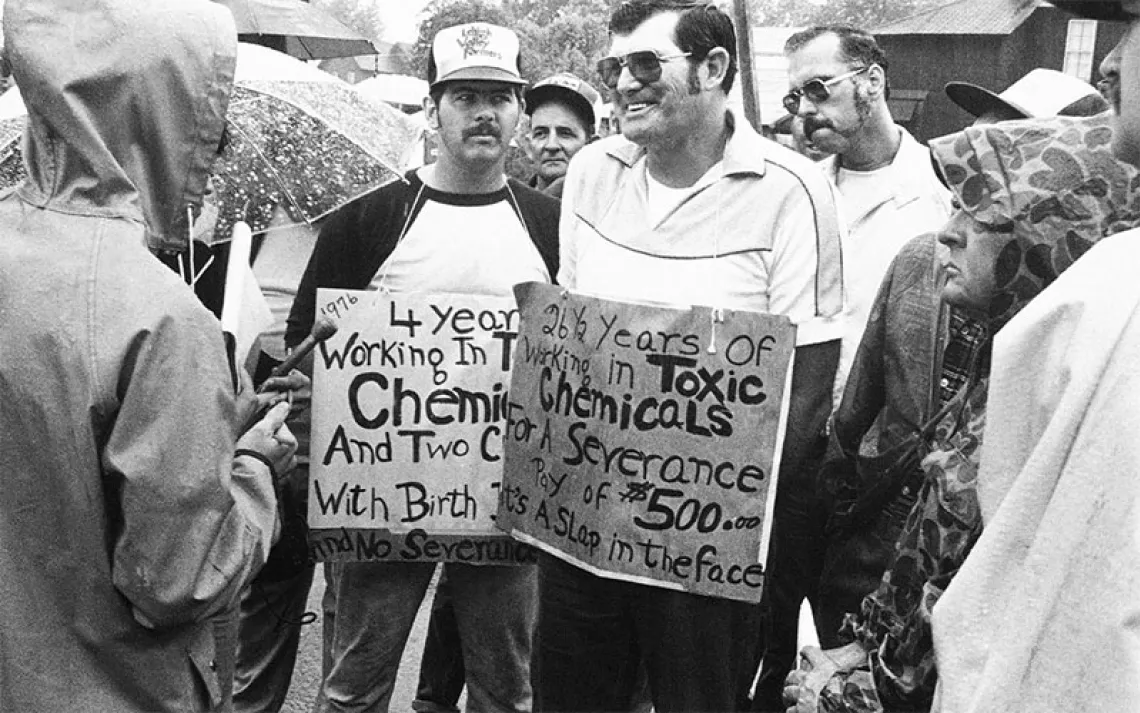Particle Pollution From Wildfires Is a Big Problem for California
Tiny particles in wildfire smoke, PM2.5 pollution, wreak havoc on human health

A DC-10 air tanker drops retardant to slow the Cave Fire burning in Los Padres National Forest. | Photo by AP Photo/Noah Berger
In October, millions of Californians awoke to hazy skies and a burnt-orange sunrise as smoke from the Kincade Fire in the north and the Getty Fire in Los Angeles enveloped the state. Evacuation orders were issued, schools closed, and millions of Californians were left in the dark when utilities rolled out precautionary power outages.
As flames devoured thousands of acres of land in California, strong winds carried air pollution hundreds of miles, creating hazardous air quality across the state. In San Francisco, particulate concentrations reached 197 µg/m3 this year, over five times higher than the EPA guideline for 24-hour PM2.5 exposure.
Since the 1970s, the area burned annually in California has grown by an astounding 500 percent. Larger, more frequent wildfires are spewing enormous quantities of smoke across a state that already struggles with poor air quality. What does the increase in smoke exposure mean for public health?
Exposure to smoke from wildfires can lead to a variety of dangerous health consequences. Of special concern are tiny particles, 30 times smaller than the width of a human hair, known as PM2.5 pollution, which can be inhaled deep into the lungs and can even enter the bloodstream.
PM2.5 pollution from wildfires is responsible for 10,000 to 30,000 premature deaths annually in the United States, according to one estimate. The death toll attributable to wildfire smoke is likely to double by the end of the century, as wildfires become more severe with climate change.
The connection between PM2.5 pollution and a host of bad health outcomes—including heart and lung disease, heart attacks, aggravated asthma, decreased lung function, and Parkinson's disease—is well established. But scientists are still discovering new and troubling links between PM2.5 pollution and common diseases.
Just last month, a study from researchers at Harvard University linked short-term exposure to PM2.5 pollution to hospitalizations among older adults for septicemia, fluid and electrolyte disorders, renal failure, urinary tract infections, and skin and tissue disorders. The study analyzed data from in-patient hospital claims to evaluate how high pollution days affect hospitalization rates.
“Because we have been able to gather data for over 95 million health claims, we wanted to assess all of the possible causes of hospitalizations that could be caused by exposure to fine particulate matter beyond the ones that have already been studied,” Francesca Dominici, professor of biostatistics at Harvard University and a coauthor of the study, said. “At this point, because we have so much data, I don’t think that it is a question of whether or not this is happening, but really a question of understanding [why it is] happening so then we can prevent it."
These findings have important implications for people living in wildfire-prone states. “When there are wildfires, levels of fine particulate matter get really, really high,” Dominici said. “Clearly, all of these health effects will be exacerbated at much higher levels because of [PM2.5] exposure from wildfires.”
Importantly, the study found that the link between hospitalization for diseases and elevated PM2.5 levels was present below the World Health Organization 24-hour PM2.5 exposure guideline of 25 µg/m3. The US standard for 24-hour exposure—35 µg/m3—is significantly less stringent than the WHO guideline. “This is overwhelming evidence that the US standard [for particle pollution] is not stringent enough,” Dominici said.
Just as concerning is a rapidly developing body of research linking PM2.5 pollution and dementia. While the vast majority of research in this area focuses on long-term PM2.5 pollution exposure and cognition, short-term exposure to high levels of PM2.5 pollution, as occurs during wildfires, could affect cognition and memory in aging adults as well.
“In the last 10 years, which tells you how new the subject is, there’s a body of evidence from three continents—Asia, North America, and Europe—that associates particles in the air . . . [with] clinical dementia and increases [in the] loss of brain function that occurs normally during aging,” Caleb Finch, a professor of neurobiology at the University of Southern California, said.
A 2017 study coauthored by Finch found that older women living in places where the levels of PM2.5 pollution exceeded EPA standards were 92 percent more likely to develop dementia and 81 percent more at risk for global cognitive decline.
“The best guess, and it’s a crude estimate, is that maybe 10 percent of dementias may be attributable to air pollution,” Finch said.
Scientists are still working to understand how short-term exposure to high levels of particle pollution during smoke waves affects the aging brain. Asked whether exposure to particle pollution during smoke waves will increase rates of Alzheimer’s disease, Finch said, “It’s a good guess.”
While the link between particle pollution and Alzheimer’s has been clear for several years now, scientists have struggled to understand the mechanism through which particle pollution contributes to the disease. A study published earlier this year provides some answers: PM2.5 pollution may actually change the human brain.
“PM2.5 was associated with physical changes in women’s brains and those changes were then connected to declines in memory performance,” Diana Younan, a research fellow at the Alzheimer’s Association and lead author of the study, said. The study found that small increases in particle pollution were linked with significant decreases in memory performance in the aging brain.
During smoke waves, people are exposed to extremely high particle pollution levels for a short period of time, but as the smoke clears, particle pollution levels decline dramatically. However, an increase in short-term particle pollution exposure isn’t the only cause for concern in the United States—nationally, particle pollution levels are up 5.5 percent since 2016, and wildfires are part of the problem. Overall, 43 percent of the jump in deaths attributable to particle pollution nationally from 2016 to 2018 occurred in California.
The good news is that particle pollution from human-generated sources—like power plants, automobiles, and smokestacks—is likely to decline in the future, despite the increase in particle pollution from wildfires, according to Jefferey Pierce, an associate professor in the Department of Atmospheric Science at Colorado State University. “We have estimated that US-wide on average, across the whole country, there will be a slight overall decrease [in particle pollution]. The decrease due to anthropogenic emissions, human-generated emissions, will exceed the increase due to wildfire smoke,” Pierce said.
The bad news? Particle pollution from wildfires is going to get a whole lot worse, for California in particular.
 The Magazine of The Sierra Club
The Magazine of The Sierra Club



